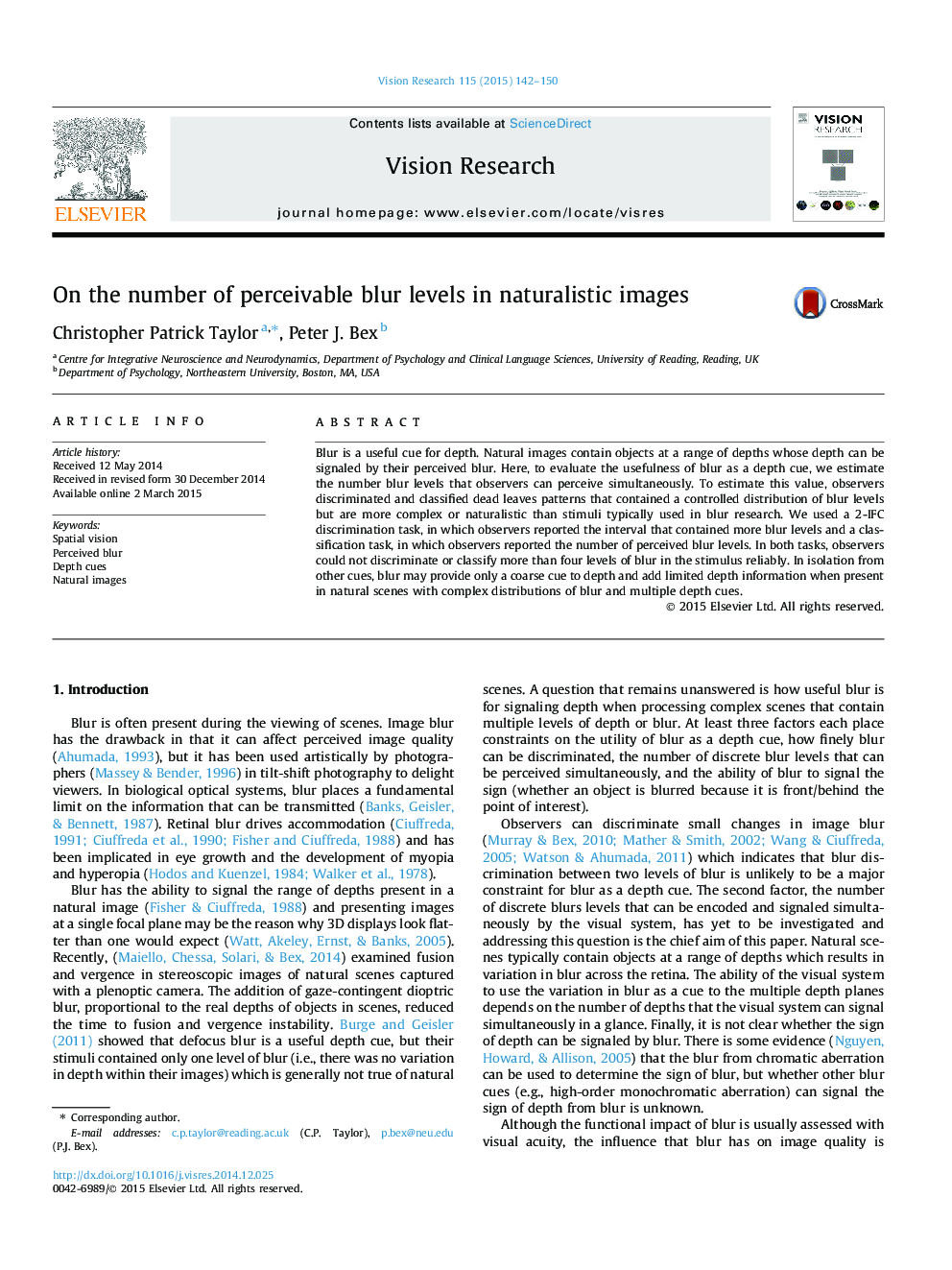| Article ID | Journal | Published Year | Pages | File Type |
|---|---|---|---|---|
| 6203144 | Vision Research | 2015 | 9 Pages |
â¢No more than four levels of blur can be discriminated or classified.â¢Percieved blur may be a coarse depth cue.â¢Observers' sensitivity to blur did not vary with the task used.
Blur is a useful cue for depth. Natural images contain objects at a range of depths whose depth can be signaled by their perceived blur. Here, to evaluate the usefulness of blur as a depth cue, we estimate the number blur levels that observers can perceive simultaneously. To estimate this value, observers discriminated and classified dead leaves patterns that contained a controlled distribution of blur levels but are more complex or naturalistic than stimuli typically used in blur research. We used a 2-IFC discrimination task, in which observers reported the interval that contained more blur levels and a classification task, in which observers reported the number of perceived blur levels. In both tasks, observers could not discriminate or classify more than four levels of blur in the stimulus reliably. In isolation from other cues, blur may provide only a coarse cue to depth and add limited depth information when present in natural scenes with complex distributions of blur and multiple depth cues.
